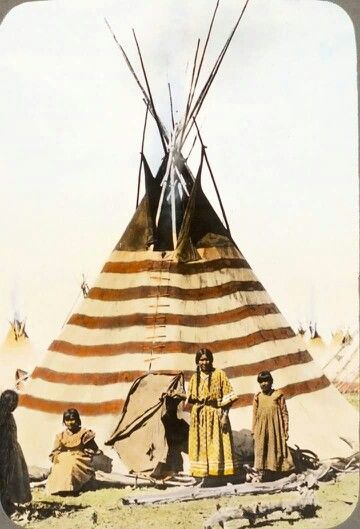Native American Art - Scouting Party on the Plains
Native American Art - Scouting Party on the Plains
“Let me tell you about my connection with the battle of the Little Rosebud. With my war party I joined the Sioux camp on the Rosebud River. We camped first at Lame Deer. When I arrived at the Sioux camp at Lame Deer we were near the Cheyenne camp, and the Cheyennes had built a big bonfire. They were singing and dancing around the fire. I was told that there were some Cheyennes that had reached camp that day or the day before from the Black Hills, and they brought the news that the soldiers were coming. The reason for the campfire and the dancing was to pick out the bravest of the Cheyennes and send them back to find out the location of the troops and bring back word. The campfire was so big and so bright and the dancing and shooting so boisterous that I went over to the Cheyenne camp to see for myself. And I saw them choosing the braves for this scouting duty. The scouts must have numbered ten. They started right off on their mission. The next morning we broke camp and came over the hills. We camped about half a day's journey from the Custer battlefield. That night, after we camped, there was no news, and I went to bed and went to sleep. The next morning I was awakened by firing, and the report came to me that there was going to
be trouble, for the troops were coming. Almost at once everybody who could ride a horse or hold a gun mounted his horse and rode away to meet the troops. The Cheyenne scouts led the way. It was not very long until I heard the report of rifles, over in the gully. After the report of the guns we heard a cry from the hilltop; an Indian was on the hill crying as hard as he could, telling us to make the charge at once. Then one of their number was killed outright. The occasion of the shots was that four or five of our Sioux had gone around us and had gone into the soldiers' camp and stolen some horses, and the soldiers were firing at the horse-thieves; four of them escaped, one being killed. This was the screaming we heard. We no sooner heard it than we made a dash. I cannot tell you the number of our Indians. There were the different bands of the Sioux, and the entire tribe of the Cheyennes. The charge we made was enough to scare anybody. As we got on top of the hill the soldiers, who were already after the horse-thieves, knowing that we outnumbered them, all fled back. The cavalry supported by a file of infantry stopped, and we also stopped and had a great battle there. We simply circled them, and did not give them a chance to charge, as we greatly outnumbered them. We killed a great many soldiers, shot down a good many of their horses, for there were lots of them lying on the ground, wounded and
dead. This battle the Indians called the Battle of the Wolf Mountains, known to the soldiers and the Crows by this name, and to the Sioux as the Battle of the Head of the Rosebud. The general sentiment was that we were victorious in that battle, for the soldiers did not come upon us, but retreated back into Wyoming. We understood that General Crook was in command of the United States troops, led by Crow scouts. They called General Crook, ‘Three Stars.’When our Indians made the charge upon the United States troops we found the Crow scouts standing between us and the troops. If it had not been for the Crow scouts we would have charged right through to the soldiers. The Crow scouts were in between us, and received the fire from both sides. After the battle ended and the soldiers returned, we got home to our camp without any fear. We spent the whole of the next day in camp at the Little Rosebud, and the day after we came over on to the plains by the Custer Battlefield.”








